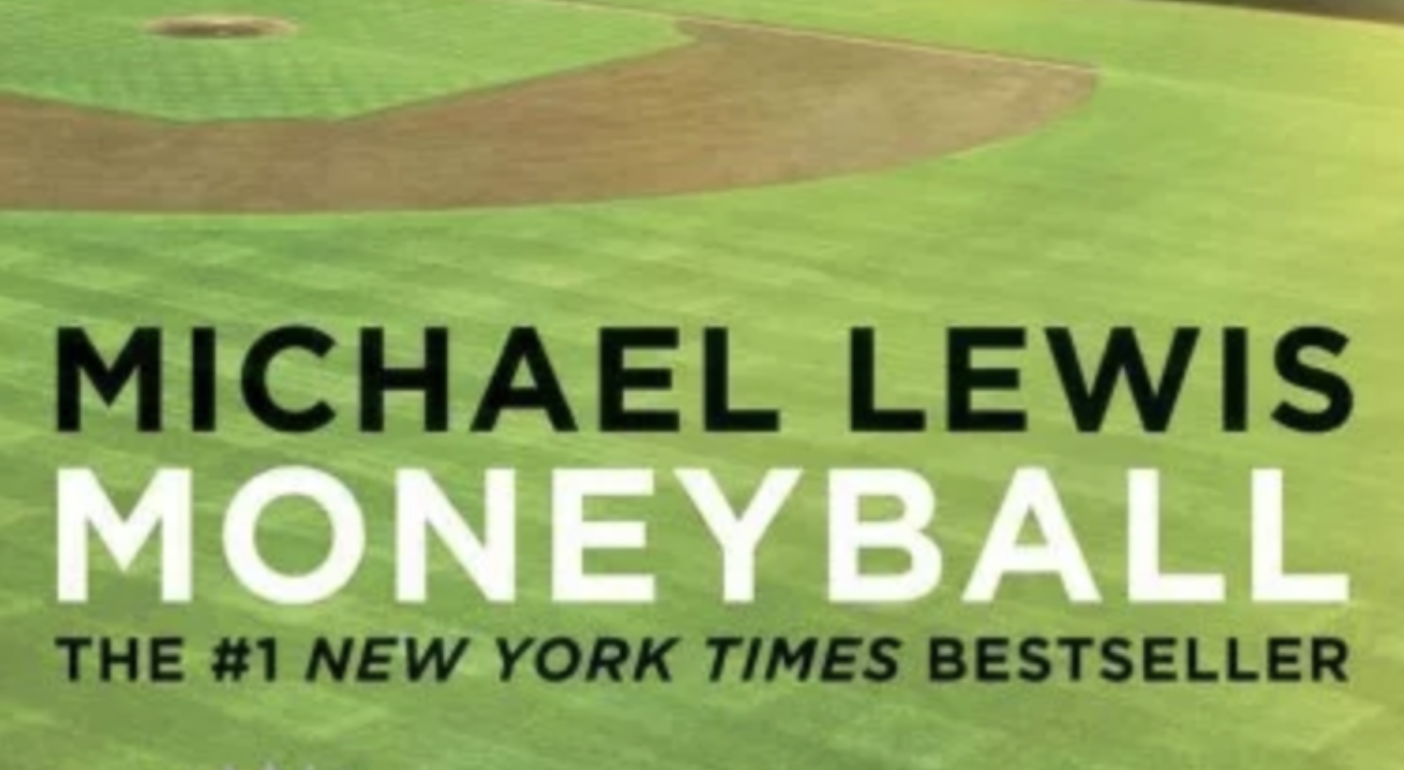The Moneyball Effect

In 2004, Michael Lewis wrote this book called "Moneyball: The Art of Winning an Unfair Game" detailing the focus of the Oakland A's (baseball team) on analytical, evidence-based, sabermetric approach to assembling a competitive baseball team, despite a disadvantaged revenue situation.
The central premise of Moneyball is that the collected wisdom of baseball insiders (including players, managers, coaches, scouts, and the front office) over the past century is subjective and often flawed. Statistics such as stolen bases, runs batted in, and batting average, typically used to gauge players, are relics of a 19th century view of the game and the statistics that were available at the time. The book argues that the Oakland A's' front office took advantage of more analytical gauges of player performance to field a team that could compete successfully against richer competitors in Major League Baseball.
Rigorous statistical analysis had demonstrated that on-base percentage and slugging percentage are better indicators of offensive success, and the A's became convinced that these qualities were cheaper to obtain on the open market than more historically valued qualities such as speed and contact. These observations often flew in the face of conventional baseball wisdom and the beliefs of many baseball scouts and executives.
The book was made into a movie in 2011, starring Brad Pitt as A's general manager Billy Beane. There is a specific scene in the movie that especially struck home with me, where a room full of the A's most senior scouts are discussing the question how the team is going to assemble the best team after losing high priced star players Jason Giambi, Johnny Damon, and Jason Isringhausen. As the room is full of scouts areone is discounting a a player because he has an ugly girlfriend, Pitt becomes frustrated how they are taking the totally wrong approach to his problem (21 seconds into the trailer below):
If you have read any part of my blog, it is petty obvious that I am a big fan of data analyis and an even biger sports fan. So the premise that a sports team had successfully innovated with a data driven approach was really cool for me.
Numbers based Decision Making
Wikipedia tells us that decision making can be regarded as the mental processes (cognitive process) resulting in the selection of a course of action among several alternative scenarios. Every decision making process produces a final choice. The output can be an action or an opinion of choice.
I see a great many decisions in Corporate America get made because of opinions or assumptions, rather than being supported by data. Here's s few supporting scenarios I have seen lead to inefficiency:
- The highest paid person's opinion (HiPPO) becomes the defacto decision adopted.
- Historical reasons may dictate decisions, even when the current circumstances completely invalidate those reasons.
- Some companies blindly follow their competitors lead, rather than understanding the problem.
- Companies are overly reactive to external factors (customers, markets, competitors) without understanding the impact.
Could you enjoy even more success if the answers to most important questions that guide your actions were based some type of statistical measure - instead of opinions, assumptions, or a hunches? Do you think your actions would change and the outcomes would be different?
With all the hype around big data and data science these days, I don't think I really need to go into any length about the importance of undertanding data in today's business world. I saw a really great quote from Yahoo CEO Marissa Mayer:
If we have data, let’s look at data. If all we have are opinions, let’s go with mine.
A company where I once worked is an interesting example (I will not cite their name). The key metric that the management was focused on was revenue from new client acquisition and new sales. Since they didn't utilize the facility to accurately track their full cost structure in their ERP system, a few of us assumed that supporting the expensive process of client acquisition could not have been profitable.
This always seemed extremely wrong to me, being that they had a significant amount of revenue and likely had higher profits from repeat business. When I asked why the focus on new business, the answer I routinely heard was that new sales was the established measure the VP of Sales (the HiPPO) had used at other companies in this vertical.
Were they right? I am not sure. But neither were they, and that is a scary proposition for their management and shareholders.
The Art of Winning an Unfair Game
As I watched the movie, it was an instant aha moment for me. I immediately focused on the subtitle - “The Art of Winning an Unfair Game”. Even if I don't have the best/most resources possible, how I can maximize my ability for achieving a successful outcome.
So I like how Lewis uses the word "art" to describe the way the A's were successful. While many people may associate science with the statistical analysis as his edge, I would argue it was more an "art" the way Beane applied the process to building the team.
There are plenty of situations where the playing field seems unfair or uneven. I certainly do not have the budget and staffs that some of my competitiors enjoy. I don't have the formal higher education (MBA, PHD) of some collegues. These things that may seem like some pretty big disadvantages, but they do not have to prevent me from being successful and competitive.
Professor Shannon W. Anderson has been using the “Moneyball” case in her MBA classes for several years. In this post, she offers an overview of how she applies it to business today:
Typically, we tend to think about budgets and constraints as the enemy of creativity. There is a sense that you need to think big thoughts, and not be constrained by an accountant looking over your shoulder. The Moneyball demonstrates that the hard budget constraints the A’s faced were the cause of creativity—it forced Billy Beane and his managers to come up with new ways to get the most out of their dollar.
Beane and his staff figured the only way to compete was to disrupt the market with through innovation. They looked at at the problem and were able to define a better way of approaching the solution.
I am big believer that the right mindest, commitment, and process can help level the playing field in many scenarios. That is probably why I enjoy being an entrepreneur so much and enjoy shipping value to users. So here is the Moneyball Process I have adopted:
- Define the objectives that will make the endeavor successful
- What are the factors that will help you achieve this objective?
- Identify the specific activiies that you and your team can do to help achieve the objedctive
- Create measures and evaluate them
Some other good takeaways from the book:
- Adapt or die.
- Find hidden value.
- Money isn’t everything.
- A good way to drive innovation is to be clear about what you want to accomplish and do not get stuck in the rut of doing things the way they’ve always been done.
- Filter out the noise and stay focused
- Look for finite, measurable business parameters that make great candidates to apply analytics and derive insights not readily apparent.
- Go ahead and take risks, but contain them.
